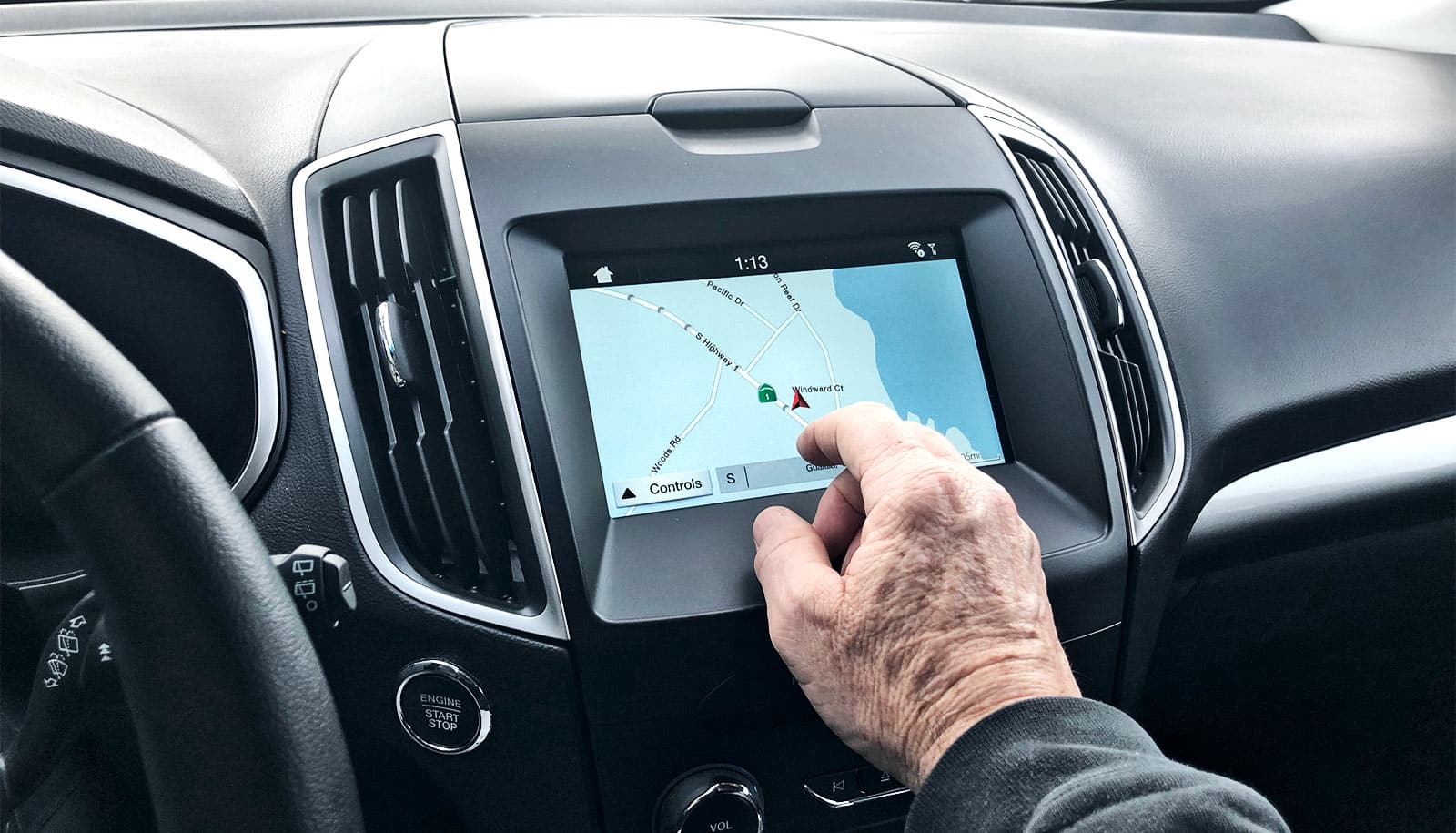
"Videos, we think, are effective because they can be paused, rewound, and reviewed multiple times, giving seniors a sense of control over what they are learning and at what pace," says Maryam Zahabi. (Credit: Bill Oxford/Getty Images )
Older adults prefer videos to learn driver assistance tech
Most cars today come with technology to make driving easier and safer. But older drivers don't often use them. Interactive video tutorials may change that.
Older adults are more likely to use driver-assistance technology if they learn how to use these technologies through interactive videos rather than through manuals or live demonstrations, according to a new study.
Most vehicles today come with their fair share of bells and whistles, ranging from adaptive cruise-control features to back-up cameras. These advanced driver-assistance systems, or ADAS, are in place to make driving easier and safer.
However, increasing evidence shows that older seniors, who are also an age group at higher risk for motor vehicle crashes, do not use many of these driver-assistance technologies.
The new study suggests that once ADAS-trained, older adults find it easier to access and use driver-assistance technologies without compromising their attention on the road.
“Older adults have a higher rate of vehicle crashes because of degradations in physical, mental, and motor capabilities,” says Maryam Zahabi, assistant professor in the industrial and systems engineering department at Texas A&M University and director of the human-system interaction (HSI) laboratory.
“With ADAS, some of the mental workload related to driving can be taken off, and we’ve shown that instructional videos are the best way to introduce ADAS to seniors. We hope that this insight will lead to better video-based training materials for this age group so that senior safety while driving is enhanced.”
Older drivers and multitasking
According to the National Highway Traffic Safety Administration, in 2016, 18% of all motor vehicle crashes involved people 65 years and older. With the population of seniors expected to increase in the decades to come, researchers estimate the number of people vulnerable to vehicle crashes will increase proportionately.
“Think of the risk for motor crashes as a U-shaped curve,” Zahabi says. “Following the shape of the letter ‘U,’ the chances of crashes among younger adults and teens is very high. Then with age, the risk for crashes lowers and remains at a small, relatively constant value until about 60 years, after which it shoots up once again.”
Risk of a vehicle crash among seniors is largely related to the fact that they find it difficult to perform multiple activities while driving, for example, starting the adaptive cruise control while still paying attention to the road and looking up to see what is the acceptable speed limit.
While ADAS relieves some of the driving-related tasks, these technologies need to be introduced to seniors in a manner that conducive to learning at their age, Zahabi says.
Ashley Shortz, a graduate student researcher from the NeuroErgonomics Laboratory, narrowed down four main ways to provide ADAS instructions—manuals, videos, driving simulators, and live demonstrations—from an instructor, based on prior research and existing training best practices.
However, researchers know little about which one of these methods best fit seniors.
“More importantly, while there is substantial evidence that men and women adopt different learning strategies, research on ADAS design and training delivery methods have largely overlooked such gender differences,” says Ranjana Mehta, associate professor in the industrial and systems engineering department and director of the NeuroErgonomics Laboratory.
To address this, the researchers recruited 10 male and 10 female drivers, ages 58-68. For this age group, the team concentrated on video-based and demonstration-based ADAS training rather than manuals or driving simulators, because prior studies show that drivers don’t read detailed instructions from manuals or have easy access to driving simulators.
After receiving training for either adaptive cruise control or the lane-keeping assist system, both popular ADAS technologies, researchers evaluated the participants’ driving performance in a laboratory-housed driving simulator that provided an immersive experience of driving along a roadway.
Then, while the drivers switched between ADAS and manual control, the researchers kept track of where the drivers directed their gaze and the activity in the part of the brain that regulates attention and mental workload, among other things.
Gender differences
The team found that for both male and female drivers , video-based training worked more effectively than demonstration-based training for introducing ADAS technologies to seniors.
“We were surprised to find that while male drivers were faster at activating ADAS, they were also the most distracted by it,” Zahabi says. “So, from a neurological standpoint, older female drivers were more efficient at using ADAS technologies and reducing their mental workload after video-based training.”
The researchers note that more comprehensive studies involving a larger number of older adults, a broader age range of participants, and a wider option of driving scenarios are needed and might shed light on other gender-based differences not uncovered in the present study.
“This finding is important as it not only emphasizes how training methods impact different groups of people, but also provides the foundation to develop more equitable, and thus more effective, training paradigms” Mehta says.
But even if preliminary, the results still indicate why videos work best for teaching ADAS to seniors, Zahabi says.
“Videos, we think, are effective because they can be paused, rewound, and reviewed multiple times, giving seniors a sense of control over what they are learning and at what pace.
“Our work does not diminish the importance of manuals and other forms of instructional materials, instead our results challenge the way we normally think about communicating ADAS technology-related information to seniors.”
The findings appear in the journal Applied Ergonomics .
Source: Texas A&M University
The post Older adults prefer videos to learn driver assistance tech appeared first on Futurity .
Share this article:
This article uses material from the Futurity article, and is licenced under a CC BY-SA 4.0 International License. Images, videos and audio are available under their respective licenses.
Related Articles:
Seniors multitask in this brain game like they’re 20
Aug. 20, 2019 • futurityTry it: Easy test checks older drivers’ car accident risk
June 2, 2022 • futurityLinks/images:
- https://www.futurity.org/drivers-with-dementia-license-renewal-1686312-2/
- https://www.futurity.org/dry-roads-most-risky-for-young-male-drivers/
- https://www.futurity.org/more-women-drivers-but-men-drive-more/
- https://doi.org/10.1016/j.apergo.2019.103036
- https://today.tamu.edu/2020/04/22/study-shows-senior-drivers-prefer-watching-videos-to-learn-driver-asistance-technologies/
- https://www.futurity.org/older-drivers-driver-assistance-technology-2345732-2/
- https://www.futurity.org


